Lately, the air seems thick with talk of economic shifts – whispers of recession, headlines about international trade, and yes, the potential impact of Trump’s new tariffs. As an artist sharing work across borders (sending pieces from my corner of Europe to homes in the US, Japan, and beyond!), it’s natural to wonder: what does all this mean for the world of art? For those of us who create it, and for those of us who find joy and meaning in bringing it into our lives?
A Glance Back: Art in Choppy Economic Waters
History offers some perspective. Art has always navigated economic ebbs and flows. During the Great Depression, for instance, while the luxury market faltered, government programs like the WPA in the US kept many artists working, often focusing on social realism and scenes of everyday life. Fast forward to the 2008 financial crisis, we saw an initial dip, followed by a recovery where certain segments of the art market were even seen by some as tangible assets in uncertain times.
These moments show us that while economic downturns inevitably impact discretionary spending (art often falls into this category), they don’t stop creation or appreciation. Sometimes, they even shift what kind of art resonates most – perhaps leaning towards pieces offering comfort, connection, or commentary.
The Tariff Topic: A New Wrinkle
Adding to the current economic climate is the recent talk, particularly from figures like President Trump, about imposing significant tariffs – taxes, essentially – on goods imported into the US from other countries, including potentially European goods. Figures like 20% or even higher are now a reality.
What could this mean practically? If art is included (and specifics often remain complex until policies are enacted), it could directly increase the cost for buyers in the US purchasing art from European artists like myself. A painting or print priced at €100 might suddenly cost the US buyer $120 plus shipping, purely due to the tariff, making international art less accessible. This isn’t a political statement, just an economic reality artists and collectors might face.
Recession Ripples and the Art Market
A broader recessionary climate typically squeezes budgets. For the art market:
- High-End vs. Accessible Art: The ultra-high-end market sometimes behaves differently, but for emerging and mid-career artists, and for prints and more accessibly priced originals, collectors might become more cautious.
- The Value Proposition: People might reconsider large purchases. However, art isn’t just a luxury item; it’s sustenance for the soul. In uncertain times, the desire for beauty, for connection, for something lasting and meaningful – like a piece of nature art that brings calm into a home – might become even more important, not less.
Where Does Nature Art Fit In?
And that brings me back to my own little corner of the art world – the florals, the landscapes, the quiet moments captured in watercolour and other mediums. Does this kind of art hold a particular resonance now?
Perhaps. There’s an inherent sense of grounding and timelessness in nature. It connects us to cycles larger than economic forecasts or political shifts. Maybe a painting of a resilient flower pushing through soil, or the calming expanse of a forest, offers a kind of solace and stability that feels particularly valuable right now. Furthermore, offering high-quality art prints alongside originals provides a way for people to bring this beauty into their homes even when budgets are tighter.
Navigating Forward
As an artist, the path forward involves continuing to create, to find beauty, and to share it. It means being transparent about potential cost factors like tariffs if they arise, and perhaps focusing even more on the intrinsic value art brings – the joy, the calm, the connection – which remains constant regardless of economic indices.
For collectors and art lovers, it might mean being more mindful in your choices, perhaps exploring artists closer to home or focusing on pieces that hold deep personal meaning. But I’m not going to lie. This will be a tough period to face for most artists and I’m worried that I will have to quit my dream of living from my art.
Ultimately, art has always been intertwined with the world around it, reflecting and responding to its times. These current economic and political currents are just the latest chapter. The desire to create and connect through art, however, is a constant thread.
What are your thoughts? How do you see the current climate affecting your relationship with art, whether as a creator or a collector?


